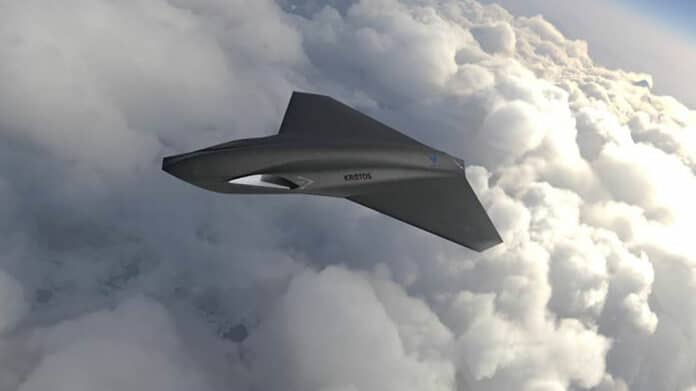Kratos Defense and Security Solutions has released the first concept rendering of a stealthy, uncrewed combat aerial vehicle (UCAV) named Thanatos. This stealth drone is the most advanced design the company has unveiled to date.
Drones are playing an increasingly important role in modern warfare. In Ukraine, local manufacturers supplied low-cost drones to the forces resisting Russian invasion last year. There are also multiple instances in countries like Iran where drones made entirely out of off-the-shelf parts were used to spy on enemies and conduct low-cost kamikaze attacks from a distance.
On the other hand, the U.S. is pursuing a different vision for drone warfare. It wants to develop highly advanced drones that can fly over long distances, strike targets accurately, and return to base safely. This makes them as advanced as fighter jets but without human pilots, and several companies – like Kratos, Boeing, General Atomics, Lockheed Martin, and Northrop Grumman – are already in the race to make them a reality.
Kratos’ Thanatos drone rendering was shared as part of the announcement of the company’s financial results for the third quarter of 2023. Kratos’ Thanatos drone was named as one of several new program opportunities that would require additional investment in 2024 in order to position the company for potentially even greater growth in 2025 and beyond.
“Among the new opportunities we are pursuing, we are in discussions with a customer and hope to be under contract next year related to certain other Kratos tactical drone systems, including Thanatos,” Eric DeMarco, Kratos’ President and CEO, said in a press release.
Thanatos has been publicly known since at least 2019, but no details about it have been released before now. The drone is named after the Greek mythological figure who personifies death.
An artist’s concept of the vehicle shows a blended tail-less uncrewed aircraft, painted black, with Kratos’ logo and a small U.S. Air Force logo. It also shows a number of stealthy elements, including a shovel nose design, deep chine line, blended and recessed inlets, and a platypus-like edge extending over the exhaust. The tail design helps significantly reduce an aircraft’s infrared signature on top of its radar stealth features, making it harder to detect and track.
Additionally, the drone’s diamond-shaped wings can offer reduced drag at high subsonic and supersonic speeds. Overall, this stealth drone is the most advanced design the company has unveiled to date.
The rendering of the drone shows the U.S. Air Force logo, so it is very likely that Kratos is hoping to get a contract from the Air Force. However, the company has not disclosed any details about the drone’s weapons capabilities, making it hard to assess its potential role and value.
A key opportunity for the platform might be the force’s Collaborative Combat Aircraft (CCA) program, a multi-pronged initiative to test, develop, and implement new autonomous and manned-unmanned aircraft teaming concepts. Through this program, the Air Force is looking to procure 1,000 uncrewed aircraft that will accompany its advanced fighter jets. However, it is still refining its CCA requirements and its vision for how it will employ these uncrewed aircraft.
Whatever Kratos’ vision for Thanatos might be, now that we have the first glimpse of the design, more details about it may now begin to emerge.
